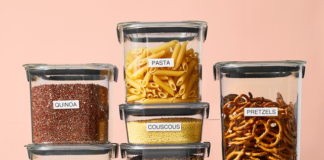
Painting the inside of a house–or even just a room–is an ambitious, time consuming undertaking. House paint can seem like a ghastly cost when you’re looking at prices between $30 and $50 per gallon. You may be asking yourself, is more expensive house paint worth the money?
Upfront Costs of Paint
There are two types of costs to take into consideration when calculating the cost of paint. The first cost is the money, the second is the time. Standing in the paint section of your local home improvement store, paint that sells for around $20 per gallon may seem like a great deal, especially when you factor in the cost of brushes, tarps, trays and rags.
The problem with inexpensive paint begins with the way it is made. While expensive paints are manufactured to provide the most even coverage possible with the least number of coats, inexpensive paints skimp on materials that would provide the same quality and thickness of coverage.
Most people have heard, if they have not experienced for themselves, that a painting project usually begins with a primer. A primer is a coat of white paint that is applied to the wall before the actual paint is applied. Primers are meant to create an even surface on the wall to be painted. Primers prevent paint from being absorbed into the wall in uneven patches, and smooths any cracks and blemishes that may appear beneath the surface of the paint. In the case of a wall that has previously been painted a dark color, primer also serves to cover up the old dark paint, preventing the need for additional coats of paint later on. Primer usually costs less than a cost of a regular gallon of paint. After primer has been applied, two or more coats of paint will need to be painted on top of the primer.
The cheaper and thinner the paint, the more coats you’ll need to apply. Since thinner paint will need more applications than thicker, higher quality paint, more paint will need to be purchased, and more time will need to be spent painting the additional coats. This is especially true of mid- to dark-toned paint because of the transparent base used to make dark paint. While light paint colors consist of a little bit of pigment mixed into a thick white base, darker colors cannot be mixed into a white base without becoming lighter. This may be a difficult concept to grasp until you imagine that you’re trying to buy a gallon of red paint. If the base of the paint was white, when the store clerk added red pigment, the resulting paint would be pink, not red. Thus, dark paint colors will be mixed into a transparent base.
A transparent base makes it difficult to achieve an even application of paint on the wall. Even expensive paints will need three or more coats in order to achieve an even, professional appearance. With cheap paints, the number of necessary coats can soar to nine, ten or more. Since the amount of time you spend allowing the paint to dry in between coats can be anywhere from five hours to an entire day, this means cheap dark paints can literally take over a week of painting time, just to finish one job.
Meanwhile, expensive paint brands are manufactured to coat well. Some pricier paints are even made with a primer and paint mixed together. While these paints can cost a minimum of about $30 per gallon, the consumer saves on the price of the primer and also the added step of painting a primer over the walls. In some cases, consumers have even reported that one coat of this type of paint is enough to cover some walls. Although a second coat is recommended by professionals in order to achieve an even finish, some may not find that necessary.
In short, the cost difference between the inexpensive paint and the expensive paint is offset by the extra amount of paint you’ll need in order to get the same coverage and finish, and the extra time you’ll have to invest.
Cost Of Additional Materials – Where Not To Skimp
Any painting project will require the purchase of some materials like tarps, paintbrushes and trays. Buy at least one good quality paintbrush for edging. Edging is tedious but important work. It’s crucial to get as straight a line as possible around the edges and corners of your walls. While some people prefer to use paint tape to create a straight edge, you’ll still want to have the appropriate tools to give you the most possible control over the paint.
A good paint roller is also very important. Cheap paint rollers can sell for a very low cost, and can be tempting given the great expense of painting the interior of house. However, cheap paint rollers can create problems that expensive paint rollers do not. Low quality paint rollers have actually been known to take off paint when doubling back over a layer of wet paint. After they’ve been cleaned a few times, low quality paint rollers can start shedding during the painting process, leaving little bits of themselves embedded in the paint.
Costs Over Time
In a room with frequent exposure to intense sunlight, even expensive paints will fade over time. There are special fade-resistant paints on the market for rooms that see a lot of sunlight during the day. However, inexpensive paints can fade faster and more dramatically. In addition, inexpensive paints have actually been known to wash off of the walls during cleanings. So, are expensive house paints worth the money? The answer is yes–in fact, expensive house paints can save you money. By buying cheap paints, you increase the likelihood that you’ll need to paint again in a few years time.
If you’re painting on a budget, there are a few ways you can limit the initial cost. Lighter colored paint will need fewer coats than darker paint. By purchasing paint with primer included, you can save on the cost of buying primer. Finally, eggshell finish paint, although hard to wash once dry, is less likely to show brush strokes and more likely to achieve an even appearance with fewer coats.






































